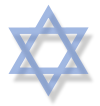Rosh Pina (Washington, D.C.)
| Rosh Pina | |
|---|---|
Hebrew: ראש פינה | |
| Religion | |
| Affiliation | Modern Orthodox Judaism |
| Rite | Unaffiliated |
| Ecclesiastical or organizational status | Synagogue |
| Status | Active |
| Location | |
| Location | Dupont Circle, Washington, D.C. |
| Country | United States |
Location in Washington, D.C. | |
| Geographic coordinates | 38°54′46″N 77°02′31″W / 38.912833°N 77.041917°W |
| Architecture | |
| Date established | 2007 (as a congregation) |
| Website | |
| roshpinadc | |
| Part of a series of articles on |
| Jewish feminism |
|---|
 |
| Advocates |
| Groups |
| Orthodox Jewish feminism |
|
| Issues |
|
Rosh Pina (
, in the United States.The independent congregation meets for Shabbat morning services twice a month in the National Museum of American Jewish Military History (NMAJMH). It also meets occasionally for Friday night and holiday services, in addition to organizing social and educational events such as shabbatonim and parties to celebrate Hanukkah, Purim and other Jewish holidays.
Overview
Rosh Pina describes it as "a dati community built around a common commitment to
tefillah, and equality.[1] It was founded in 2007 as a partnership minyan in order to provide a religious environment that was more inclusive of women's participation than traditional Orthodox
synagogues.
Services and liturgy
The congregation combines a traditional liturgy with certain prayer leadership opportunities for women, including
Kabbalat Shabbat on Friday nights, Pesukei DeZimra, removing and replacing the Torah in the Ark, and reading from and being called up to the Torah on Saturday mornings. A mechitza separating men and women runs down the middle of the room. Its practices are similar to those of Shira Hadasha[2] in Jerusalem and Darkhei Noam[3] in New York City
.
Halakhic basis
The practices of Rosh Pina and communities like it are based on an opinion by Modern Orthodox Rabbi
Halakhic analysis, entitled Qeri’at ha-Torah by Women: A Halakhic Analysis he calls upon those times throughout our history when women have received aliyot to (have been called up to) and have read from the Torah in communal services with men and women present, and carefully examines the circumstances in which this took place. His position and conclusions have subsequently been supported and expanded upon by Rabbi Dr Daniel Sperber,[5] Professor of Talmud at Bar-Ilan University in his article entitled Congregational Dignity and Human Dignity: Women and Public Torah Reading. Sperber also delves into specific cases when Jewish law permitted and sometimes even required women to be called to and read from the Torah on Shabbat in services with men present. Like Shapiro, Sperber is not known as a Posek
(decider of Jewish law) and this particular position of both of them is a minority view.
Rabbi
Aryeh Frimer and Dov Frimer, who wrote that "these practices are a radical break from the ritual of millennia and have not received the approval of any major posek."[7]
See also
- Jewish Orthodox Feminist Alliance
- Jewish feminism
- Role of women in Judaism
Footnotes
- ^ "Home page". Rosh Pina. n.d. Retrieved January 21, 2013.
- ^ "About Shira Hadasha". Shira Hadasha Website. Retrieved January 21, 2013.
- ^ "About Darkhei Noam". Retrieved January 21, 2013.
- ^ Shapiro, Mendel (2001). "Qeri'at ha-Torah by Women: A Halakhic Analysis" (PDF). Edah. 1 (2).
- ^ Sperber, Daniel (2002). "Congregational Dignity and Human Dignity: Women and Public Torah Reading" (PDF). Edah. 3 (2).
- ^ Student, Gil (January 31, 2013). "Conservative Orthodoxy". Hirhurim - Musings. Retrieved February 11, 2013.
- Frimer, Aryeh A.; Frimer, Dov I. (May 23, 2010). "Partnership Minyanim". Text & Texture. Retrieved February 11, 2013.
Further reading
- Ross, Tamar (2004). Expanding the Palace of Torah: Orthodoxy and Feminism. Brandeis University Press. pp. 97–98, 179–183. ISBN 978-1-58465-390-5.
- ISBN 1-58465-658-1.
- Salmon, Jacqueline L. (April 29, 2009). "Synthesis Outside the Synagogue". Washington Post.
- Sperber, Daniel (2010). Women and Men in Communal Prayer: Halakhic Perspectives. KTAV Publishing House. ISBN 978-1602801523.

